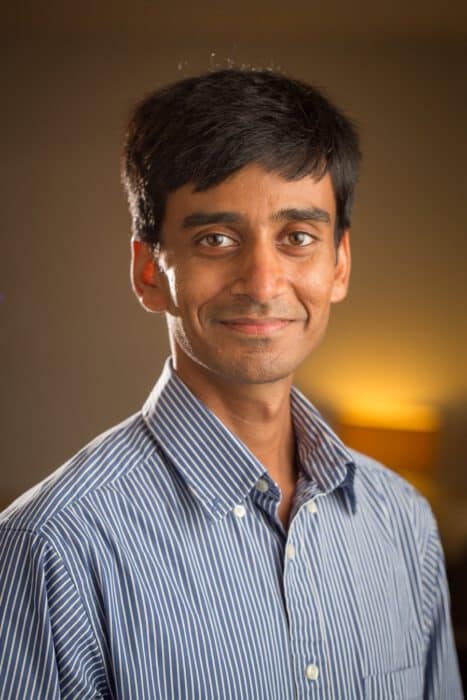Dr Ankush Aggarwal he/him

Senior Lecturer
Strategic Research Areas
I think of myself as a hybrid of a scientist, engineer, and mathematician. My research at these interfaces focusses on improving the cardiovascular healthcare through novel methods and innovative ideas in numerical methods and biomechanics.
There is a pressing need to make healthcare sciences more quantitative and predictive via customized mathematical models, so that we can answer not only “how” but also “how much” questions. My group’s research is inherently multidisciplinary where we collaborate with clinicians, computer scientists, radiologists, and biologists. For example, we are collaborating internationally with radiologists to find trends in ultrasound images of aneurysm and aortic stenosis patients. These trends help us understand the disease development as well as diagnose them at an early stage. We are also part of a UK-wide network working on developing computer models in lieu of lengthy and expensive clinical trials. Another project involves helping our industrial partner improve the design of their device by developing more predictive models of the aorta.
I lead a dynamic research group of 6 PhD students, which is diverse both in terms of gender (4 female and 2 male) and race. My supervision philosophy to help them become independent and motivate them to ask pertinent questions. In addition, I have supervised four postdoctoral researchers, who are currently working in various roles in academia and industry. My recently graduated first PhD student, who worked on developing models of the effect of drug on arterial healing, is currently working at an aerospace company Leonardo. This ability of my students to move across domains demonstrates the value of transferable skills they acquire in our field of research.
Lastly, there is a broader importance of inclusion and diversity in how the healthcare research is done. Many of the currently available treatments have been developed based on a biased population sampling. For example, the differences between male and female physiology are generally ignored, often having a detrimental effect on the treatment efficacy. Through this CDT, I hope to make progress in tackling these challenges by preparing the next generation of researchers.

